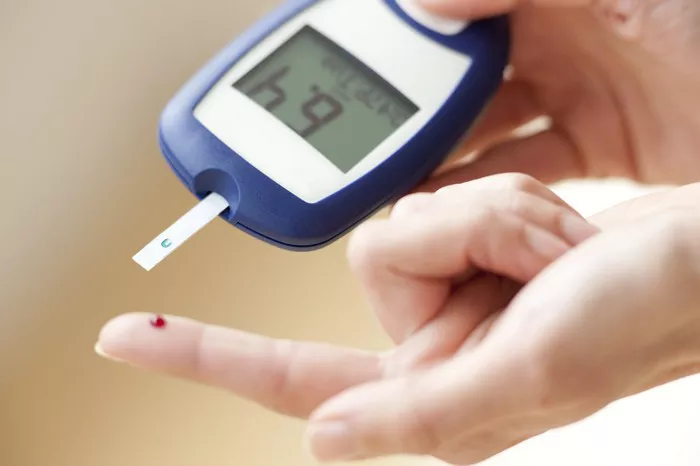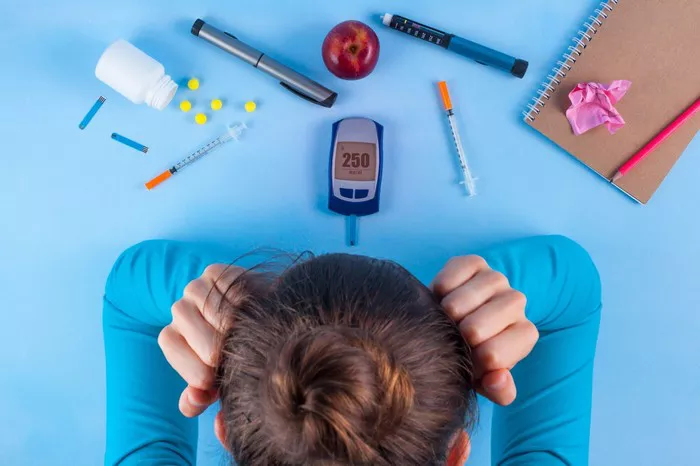Hypoglycemia, commonly referred to as low blood sugar, is a condition characterized by abnormally low levels of glucose in the blood. This condition can be particularly concerning as glucose is the primary energy source for the brain and body. Accurate diagnosis of hypoglycemia is crucial for appropriate management and treatment. In clinical practice, diagnosing hypoglycemia involves a combination of patient history, physical examination, and specific diagnostic tests. This article provides an in-depth overview of the diagnostic tests used for hypoglycemia, including their methodologies, advantages, limitations, and clinical applications.
The Whipple’s Triad: A Fundamental Diagnostic Approach
Before delving into specific diagnostic tests, it is important to understand Whipple’s Triad, a set of criteria that forms the foundation for diagnosing hypoglycemia. Whipple’s Triad includes:
- Symptoms consistent with hypoglycemia (e.g., shakiness, sweating, confusion, palpitations).
- A low plasma glucose concentration measured at the time of symptoms.
- Relief of symptoms after the plasma glucose level is raised.
Whipple’s Triad emphasizes the importance of correlating symptoms with low blood glucose levels and the resolution of symptoms with glucose normalization. This triad is essential in distinguishing true hypoglycemia from other conditions with similar symptoms.
Diagnostic Tests for Hypoglycemia
1. Blood Glucose Measurement
Capillary Blood Glucose Testing:
- Methodology: Capillary blood glucose (CBG) testing, commonly performed using fingerstick blood samples and glucometers, is the most immediate and accessible method for assessing blood glucose levels. It provides rapid results and is widely used in both clinical and home settings.
- Advantages: Quick, convenient, and requires minimal equipment.
- Limitations: Less accurate than venous blood glucose measurements, especially at very low glucose levels.
Plasma Glucose Measurement:
- Methodology: Plasma glucose measurement is considered the gold standard for diagnosing hypoglycemia. Blood samples are typically drawn from a vein and analyzed in a laboratory using enzymatic methods, such as glucose oxidase or hexokinase assays.
- Advantages: Highly accurate and reliable.
- Limitations: Requires venipuncture and laboratory analysis, leading to longer turnaround times compared to CBG testing.
2. Continuous Glucose Monitoring (CGM)
Methodology:
- CGM systems involve the insertion of a small sensor under the skin, which measures interstitial glucose levels continuously throughout the day and night. The data is transmitted to a receiver or a smartphone app, allowing real-time glucose monitoring.
- Advantages: Provides comprehensive glucose profiles, detects nocturnal hypoglycemia, and reveals glucose trends and patterns.
- Limitations: Interstitial glucose levels may lag behind blood glucose levels, sensor accuracy can vary, and CGM systems can be expensive.
3. Oral Glucose Tolerance Test (OGTT)
Methodology:
- The OGTT involves measuring fasting plasma glucose levels, followed by the administration of a standardized oral glucose solution (usually 75 grams of glucose). Blood samples are then taken at various intervals (typically 30, 60, 90, and 120 minutes) to assess the body’s glucose handling.
- Advantages: Useful for diagnosing reactive hypoglycemia and evaluating glucose metabolism disorders.
- Limitations: Time-consuming and may not be suitable for patients with severe hypoglycemia due to the risk of inducing low glucose episodes.
4. Mixed Meal Tolerance Test (MMTT)
Methodology:
- The MMTT is similar to the OGTT but uses a mixed meal (containing carbohydrates, protein, and fat) instead of a glucose solution. This test evaluates the body’s response to a typical meal.
- Advantages: More physiologically representative of everyday eating patterns compared to OGTT.
- Limitations: Like the OGTT, it is time-consuming and may not provoke hypoglycemia in all individuals with the condition.
5. 72-Hour Fasting Test
Methodology:
- The 72-hour fasting test is a prolonged fasting study conducted under medical supervision. Blood glucose and other relevant parameters (e.g., insulin, C-peptide, ketones) are measured periodically throughout the fast until hypoglycemia is documented or the 72-hour period is completed.
- Advantages: Highly sensitive for detecting insulinomas and other causes of fasting hypoglycemia.
- Limitations: Requires hospitalization, is time-consuming, and may be uncomfortable for the patient.
Hormonal and Metabolic Evaluations
In addition to glucose measurements, assessing hormonal and metabolic markers can provide valuable insights into the underlying cause of hypoglycemia. Key evaluations include:
1. Insulin and C-Peptide Levels
Methodology:
- Insulin and C-peptide levels are measured in the blood to distinguish between endogenous (internal) and exogenous (external) sources of insulin. High insulin and C-peptide levels suggest endogenous hyperinsulinemia, which can be indicative of insulinoma or other causes of hyperinsulinism.
- Advantages: Helps identify inappropriate insulin secretion and guides further diagnostic work-up.
- Limitations: Requires careful interpretation in the context of concurrent glucose levels.
2. Beta-Hydroxybutyrate (BOHB) and Free Fatty Acids (FFA)
Methodology:
- BOHB and FFA levels are measured to assess ketogenesis and lipolysis. In hypoglycemia due to insulin excess, BOHB and FFA levels are typically low, while in other forms of hypoglycemia (e.g., due to glycogen storage disorders), these levels may be elevated.
- Advantages: Provides insight into metabolic state and differentiates between types of hypoglycemia.
- Limitations: May not be routinely available in all clinical settings.
3. Cortisol and Growth Hormone Levels
Methodology:
- Cortisol and growth hormone levels are measured to evaluate adrenal and pituitary function. Deficiencies in these hormones can cause hypoglycemia, especially in fasting states.
- Advantages: Identifies endocrine deficiencies contributing to hypoglycemia.
- Limitations: Hormonal assays can be complex and require interpretation by endocrinologists.
Imaging and Advanced Diagnostic Techniques
For certain cases of hypoglycemia, especially when an insulinoma or other pancreatic pathology is suspected, imaging studies and advanced diagnostic techniques may be warranted:
1. Endoscopic Ultrasound (EUS)
Methodology:
- EUS involves the use of an endoscope equipped with an ultrasound probe to visualize the pancreas and surrounding structures. This technique is particularly useful for detecting small insulinomas.
- Advantages: High sensitivity for detecting small pancreatic tumors.
- Limitations: Invasive procedure requiring sedation.
2. Computed Tomography (CT) and Magnetic Resonance Imaging (MRI)
Methodology:
- CT and MRI scans provide detailed cross-sectional images of the abdomen, helping to identify pancreatic tumors, adrenal masses, or other abdominal pathologies associated with hypoglycemia.
- Advantages: Non-invasive, widely available, and useful for anatomical evaluation.
- Limitations: May not detect very small lesions; exposure to radiation (CT) or longer scan times (MRI).
3. Positron Emission Tomography (PET) Scans
Methodology:
- PET scans, often combined with CT (PET-CT), use radiolabeled tracers to detect metabolic activity in tissues. This is particularly useful for identifying insulinomas and other metabolically active tumors.
- Advantages: High sensitivity for detecting functional tumors.
- Limitations: Expensive and requires specialized facilities.
Differential Diagnosis and Special Considerations
When diagnosing hypoglycemia, it is important to consider various differential diagnoses, as numerous conditions can present with low blood glucose levels. These include:
1. Insulinomas
Insulinomas are pancreatic tumors that secrete excessive amounts of insulin, leading to recurrent hypoglycemia. Diagnostic clues include elevated insulin and C-peptide levels during hypoglycemia, and confirmation often requires imaging studies such as EUS, CT, MRI, or PET scans.
2. Non-Islet Cell Tumor Hypoglycemia (NICTH)
NICTH is caused by large tumors that secrete insulin-like growth factors (IGFs) or consume excessive glucose. Diagnosis involves measuring IGF levels and imaging to identify the responsible tumor.
3. Adrenal Insufficiency
Adrenal insufficiency, including Addison’s disease, can lead to hypoglycemia due to inadequate cortisol production. Diagnosis involves measuring cortisol and adrenocorticotropic hormone (ACTH) levels, with an ACTH stimulation test often performed for confirmation.
4. Hypopituitarism
Hypopituitarism, characterized by deficient production of pituitary hormones, can cause hypoglycemia due to growth hormone or ACTH deficiency. Diagnosis involves evaluating pituitary hormone levels and imaging the pituitary gland.
5. Glycogen Storage Disorders
Glycogen storage disorders, such as Von Gierke disease, impair glycogen metabolism, leading to hypoglycemia. Diagnosis involves genetic testing and assessment of enzyme activity.
Conclusion
Diagnosing hypoglycemia requires a comprehensive approach that integrates clinical evaluation, blood glucose measurements, hormonal assessments, and advanced imaging techniques. Understanding the various diagnostic tools and their appropriate use is essential for identifying the underlying cause of hypoglycemia and guiding effective treatment. By following structured diagnostic protocols, healthcare providers can ensure accurate diagnosis and optimal management of patients with hypoglycemia, ultimately improving patient outcomes and quality of life.
Related topics:
























